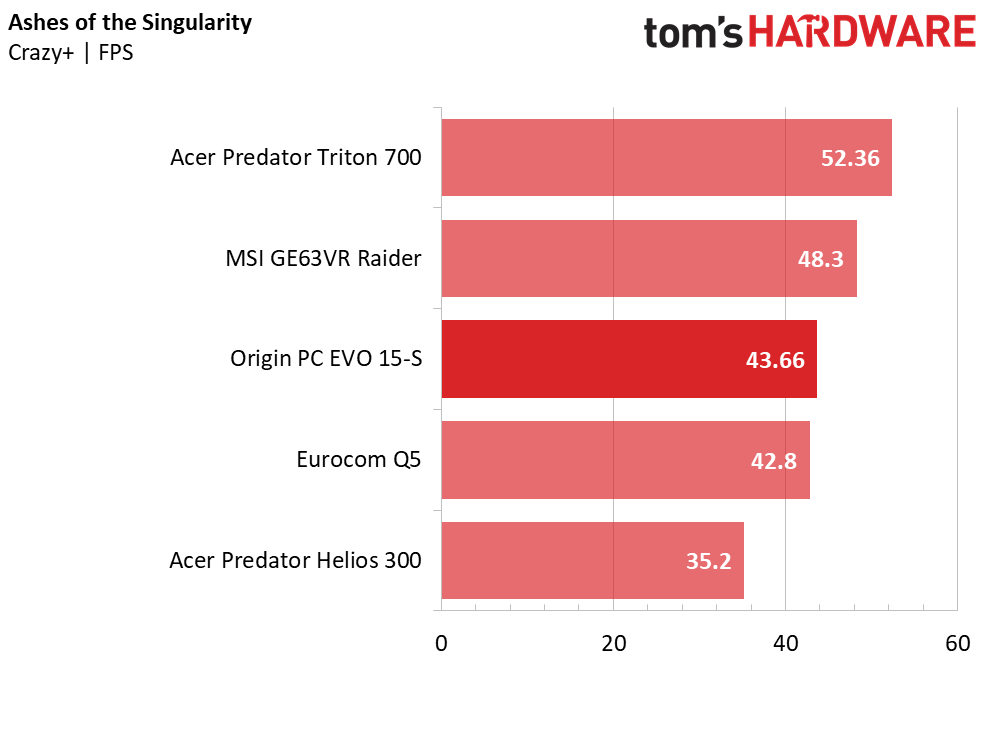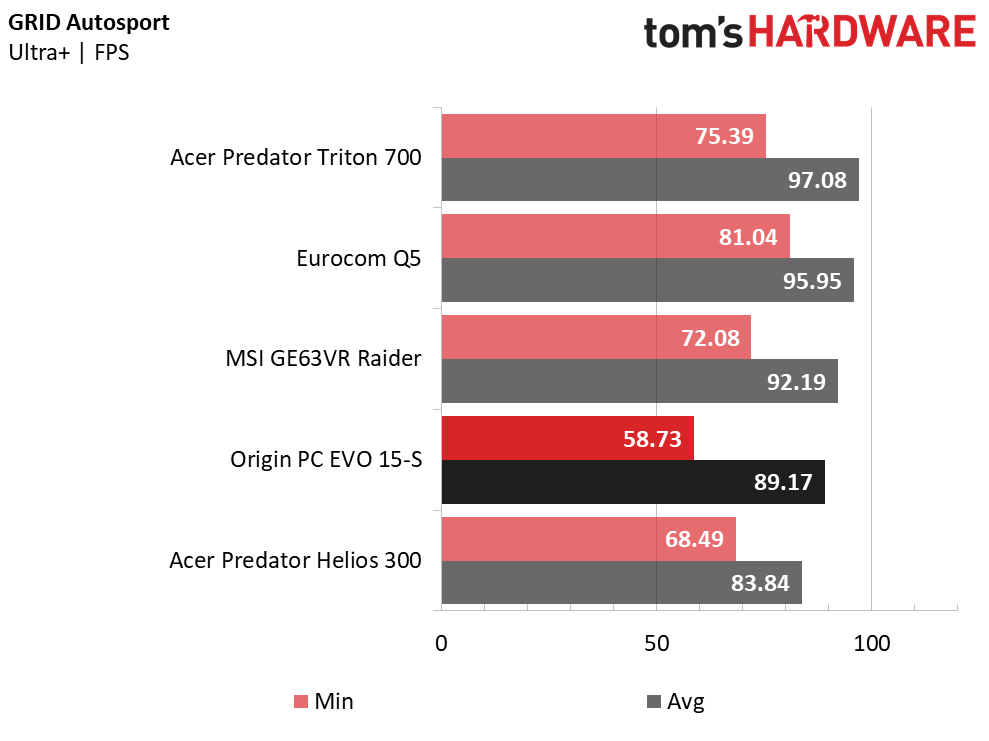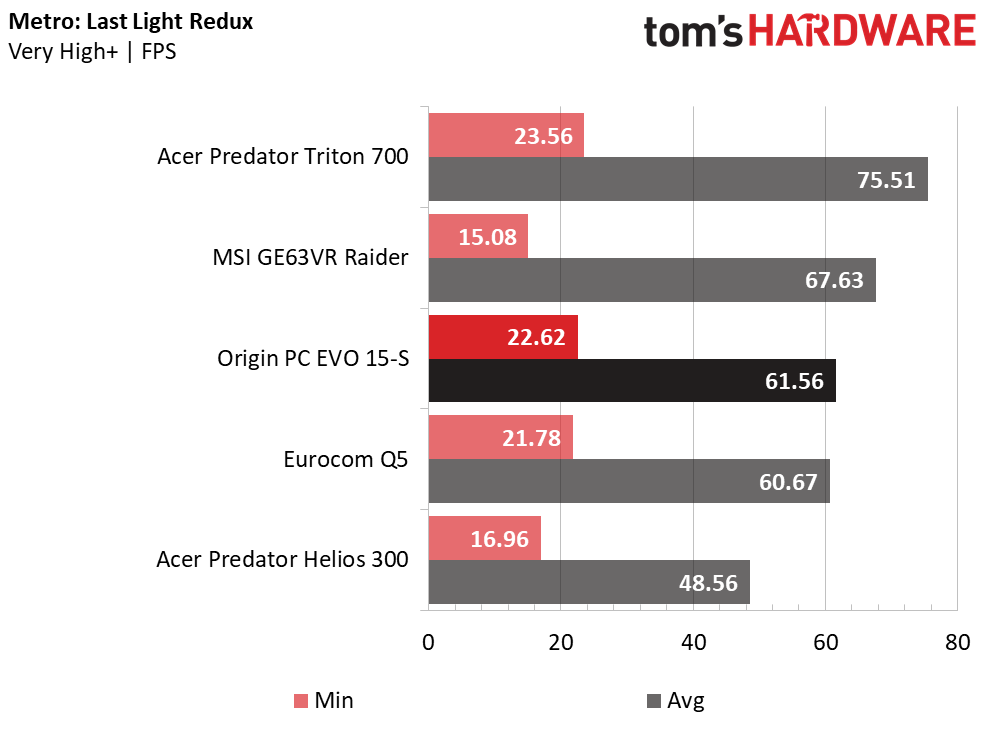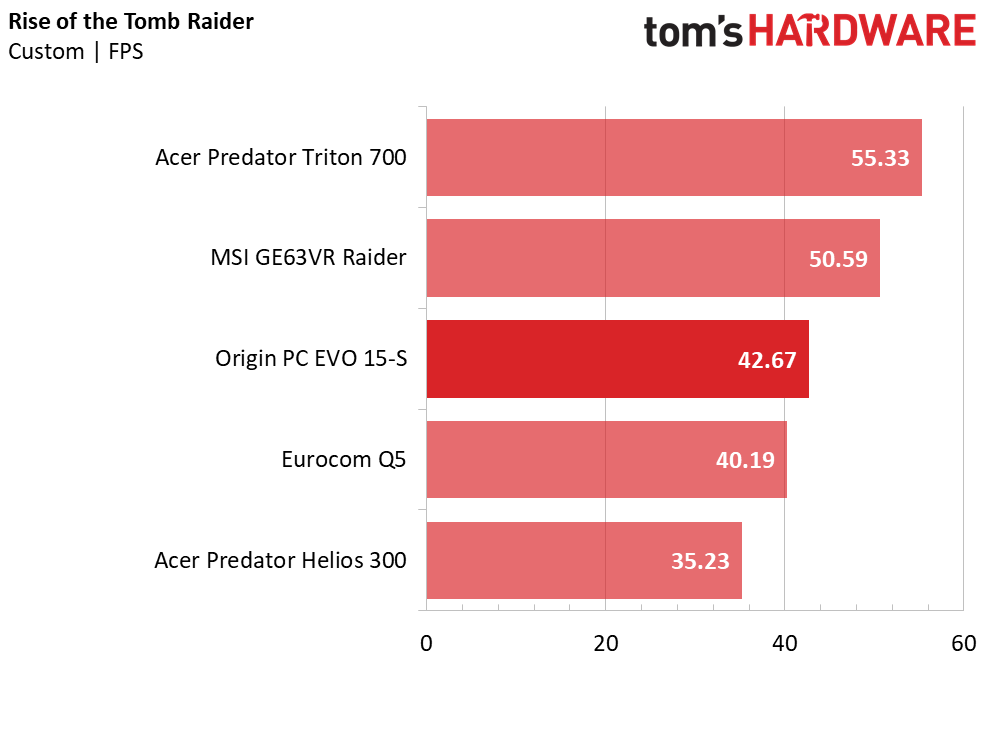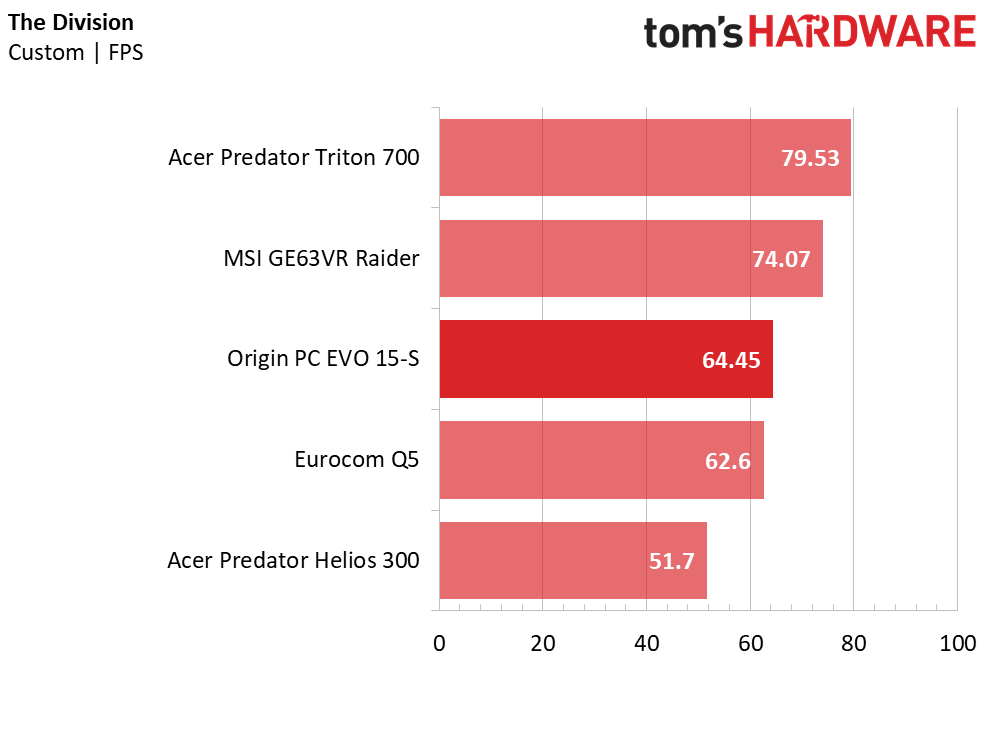Origin PC EVO 15-S Max-Q Gaming Laptop Review
Why you can trust Tom's Hardware
Gaming Benchmarks
Ashes of the Singularity
Ashes of the Singularity is very demanding, even giving GTX 1080-based laptops trouble. We monitored the EVO 15-S Max-Q GPU during the benchmark sequence and found an average temperature of 72°C, a maximum temperature of 74°C, and an average boost clock of 1375 MHz, which is close to this GPU's maximum boost clock rating (1379 MHz vs a max of 1683 for the regular 1070). The EVO 15-S falls short of the MSI Raider by 11%—well within Nvidia's predicted performance delta.
DiRT Rally
We also monitored the GPU during the DiRT Rally benchmark using GPU-Z and found temperatures hovering around 73°C and a boost clock of 1377 MHz. The resulting frame rate is about 86% of the MSI Raider's regular laptop GTX 1070, or nearly 10 FPS slower. The Max-Q GPU still provides well over 60 FPS, so you'll get a smooth experience. At the low end of this comparison set, the Helios 300 performs 21% slower than the Origin PC, dragging its frame rate below 60 FPS.
Grand Theft Auto V

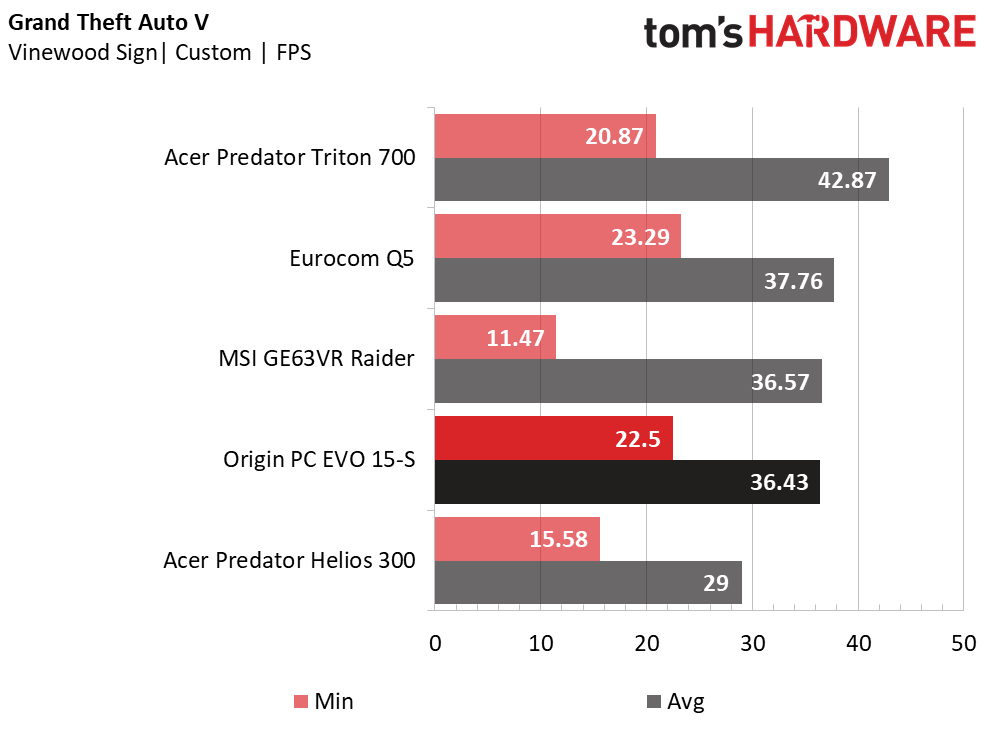



Grand Theft Auto V is our second heavy hitter, so we didn't expect the EVO 15-S and its power-restricted Max-Q GPU to match the MSI Raider. We were pleasantly surprised to find that the EVO performs quite competitively, falling only a few frames behind in most cases. It performs particularly well during the Vinewood Sign scene, whose workload includes rendering distant landscapes. The only outlier is the Sandy Shores scene, where the Origin PC's frame rate falls behind the MSI offering's by about 15%.
However, the GTX 1070 can't deliver 60+ FPS consistently. You'll either need to lower a few settings or step up to a GTX 1080-based system like the Triton.
GRID Autosport
GRID Autosport isn't very demanding, so any laptop equipped with a modern GPU will deliver outstanding performance. The EVO performs only 3% slower than the Raider. Meanwhile, the Acer Helios gives it a run for its money, performing only 6% slower. What's most surprising is that the Eurocom Q5, which also contains a GTX 1070 Max-Q, performs 8% faster than the EVO. Upon further inspection, we found the Q5's Max-Q to be running at its maximum boost clock, whereas the EVO's Max-Q only ran at 1336 MHz, well under the maximum. Looking further at the temperatures during the gaming run, the Origin GPU operated well within safe temperatures, at 75°C. The Eurocom hit 78°C. For some reason, the Origin wasn't hitting its full potential in this game.
Hitman
Performance in Hitman relies on a well-rounded performance platform, and as such, all three of our GTX 1070 laptops, Max-Q or not, deliver virtually the same frame rate.
Metro: Last Light Redux
At this point in our gaming suite, we'll throw three demanding games at the EVO 15-S back to back. The first is Metro: Last Light Redux, whose benchmark sequence once dominated even the strongest systems. The MSI Raider and its GTX 1070 are more than the match for it, but the Max-Q GTX 1070s only barely maintain 60 FPS. The GTX 1070 Max-Q in the EVO exhibits a boost clock of 1376 MHz, so it won't reach the Raider's frame rate without graphical tweaks.
Get Tom's Hardware's best news and in-depth reviews, straight to your inbox.
Rise of the Tomb Raider
Rise of the Tomb Raider usurps Metro's throne as the most punishing title. Even powerful GTX 1080-based laptops will struggle to maintain 60+ FPS. In fact, the GTX 1080 Max-Q based Triton only delivers an average frame rate of 55.33 FPS; this only spells further trouble for the less powerful GTX 1070 Max-Q. The EVO 15-S and Q5 lag behind the MSI Raider by 19-26%, which results in frame rates falling to the low 40s.
The Division
Our last graphically demanding title is The Division, which isn't quite as strenuous as RotTR. The GTX 1070 Max-Q provides just enough horsepower to deliver over 60 FPS, whereas a GTX 1060-based system like the Acer Helios only lands us in the low 50s. On a laptop with a high refresh rate, like our EVO 15-S, the GTX 1070 Max-Q won't quite cut it, smoothness wise, unless you're willing to drop the graphical settings.
Thief
Thief is the final game in our suite, and it features a platform-based workload. A GTX 1060 is the most you'll need to reach 60 FPS at maximum settings, unless of course you have a high refresh rate monitor. The EVO 15-S is one such system, but the GTX 1070 Max-Q falls short of its 120Hz refresh rate by about 19%. Even the Acer Triton falls short of its 120Hz refresh rate, so you'll need to reduce your settings.
MORE: Best Gaming Laptops
MORE: Gaming Laptop Previews
MORE: All Laptop Content
Current page: Gaming Benchmarks
Prev Page Synthetic Benchmarks Next Page Battery, Thermal & Display Testing